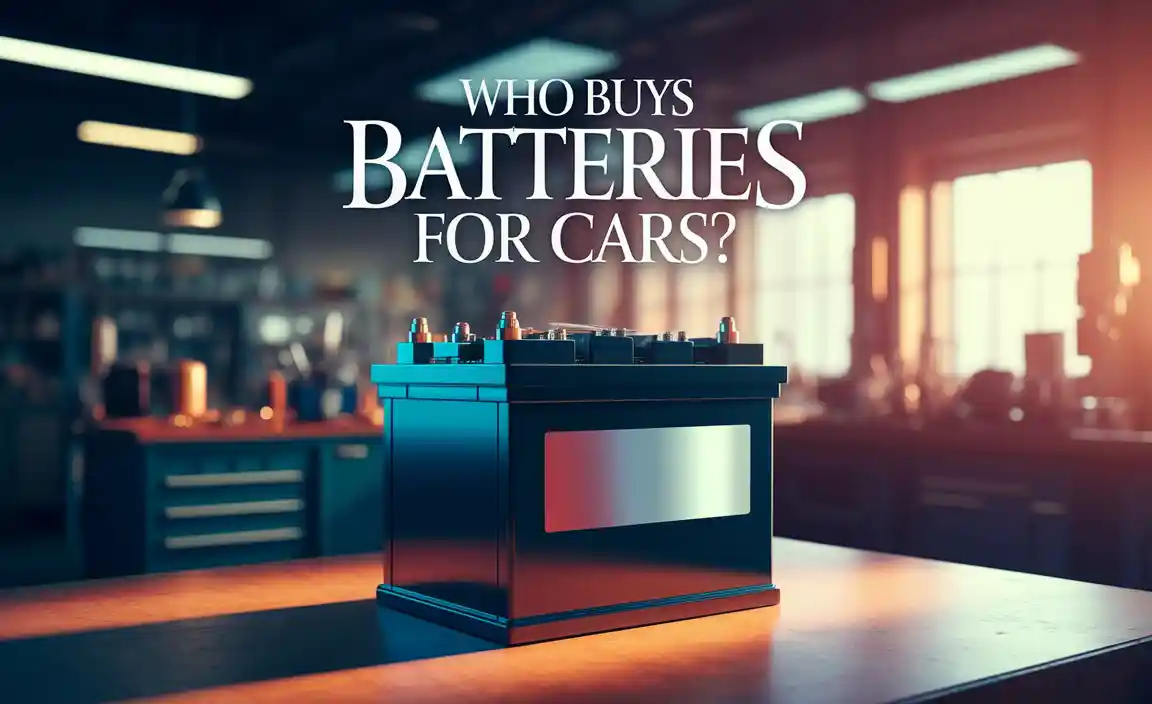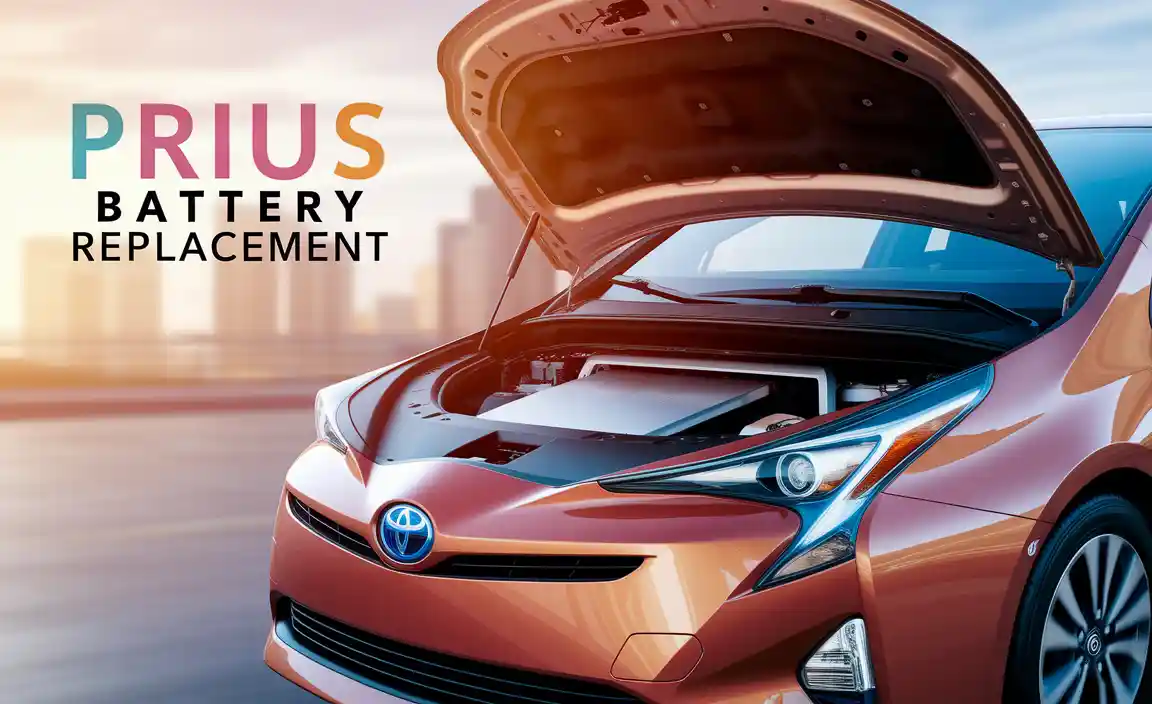Quick Summary
Choosing the right 50 amp plug adapter for your generator is straightforward. Look for adapters that match your generator’s outlet type and the appliance’s plug type, ensuring they are heavy-duty and certified for safety. This guide simplifies the process, helping you connect your power safely and effectively.
When you need reliable power, your generator is a lifesaver. But sometimes, the plug on your generator doesn’t quite match the plug on the device you need to power. This can be confusing, especially when dealing with higher amperage like 50 amps. You might have a 50-amp outlet on your generator and need to plug in an RV, a large tool, or multiple appliances that have different plug types. Getting this connection wrong can be frustrating and even dangerous. Don’t worry, it’s simpler than it sounds! This guide will walk you through everything you need to know about 50 amp plug adapters for generators so you can hook up your power confidently and safely. We’ll cover what you need to consider before you buy and how to choose the perfect adapter for your needs.
Why You Might Need a 50 Amp Generator Plug Adapter
Generators come with various outlets, and so do the things you want to plug into them. A 50-amp adapter acts as a bridge, allowing these incompatible connections to work together. This is super common for RV owners who need to power their homes away from home, as RVs often have a 50-amp service plug.
Imagine you have a powerful 50-amp generator, but your camper trailer has a different plug configuration, maybe a 30-amp twist-lock or even a standard household plug for smaller items. Without the right adapter, you wouldn’t be able to draw power. The same applies if you need to power heavy-duty construction tools that require a robust connection or split a single 50-amp outlet into multiple standard outlets for convenience.
Understanding 50 Amp Generator Plugs and Outlets
Before we dive into adapters, let’s quickly get familiar with what “50 amp” usually means in this context. A 50-amp service is a significantly more powerful electrical connection than a typical home outlet (which is usually 15 or 20 amps). This higher amperage allows for powering larger loads, like an entire RV with air conditioning, heating, and kitchen appliances running simultaneously.
Most 50-amp connections, especially for RVs and generators, use a specific type of plug and receptacle. The most common is the NEMA 14-50P (plug) and NEMA 14-50R (receptacle). This setup typically has four prongs: two hot wires (L1 and L2), one neutral wire, and a ground wire. This is different from a 30-amp RV plug (which is often a NEMA TT-30P) or standard household plugs.
It’s crucial to understand the type of 50-amp outlet your generator has and the type of plug you need to connect. This information is usually printed on the generator itself or in its manual.
Types of 50 Amp Plug Adapters
50 amp plug adapters come in various forms, designed to bridge different connection types. Here are the most common ones you’ll encounter:
1. 50 Amp Generator Outlet to RV 30 Amp Plug Adapter
This is perhaps one of the most popular adapters. If your generator has a 50-amp outlet (like a NEMA 14-50R) and you need to plug in an RV that has a 30-amp RV plug (like a NEMA TT-30P), this adapter is essential. It takes the higher amperage and 50-amp service from your generator and converts it down to the 30-amp service your RV is designed to handle.
How it works: It essentially takes the power from your generator’s 50-amp outlet and makes it compatible with your RV’s 30-amp inlet. It’s crucial that your generator can supply sufficient amperage, even if the RV only draws 30 amps. You wouldn’t want to connect a 30-amp generator to a 50-amp RV without a proper reducer; this adapter allows a 50-amp generator to power a 30-amp RV.
2. 50 Amp Generator Outlet to Standard Household Plug Adapter (5-20R)
Sometimes, you might need to power smaller appliances or charge devices that use a standard household plug (like a NEMA 5-20R, which is a 20-amp outlet with a T-shaped neutral slot for higher amperage devices, or a NEMA 5-15R, a standard 15-amp outlet). This adapter allows you to plug one or more of these standard cords into your generator’s 50-amp outlet.
Important Note: While this adapter lets you plug in, you still need to be mindful of the total amperage draw. A single 50-amp outlet on your generator can power a lot, but you shouldn’t overload it by trying to run too many high-draw appliances simultaneously, even through adapters. Some adapters of this type might split one 50A outlet into multiple outlets, offering more connection points.
3. 50 Amp Plug to Multiple 50 Amp Plugs Adapter
Less common for beginner home use but useful for specific setups, these adapters allow you to take a single 50-amp outlet and turn it into multiple 50-amp outlets. This is more for specialized applications where you need to power several large, 50-amp devices.
4. 50 Amp Generator Twist-Lock (L14-50R) to Straight Blade (14-50R) Adapter
Some generators, especially higher-end models, might have a 50-amp twist-lock outlet (like an L14-50R, which is different from the NEMA 14-50R in how the neutral and ground are wired, and supports 120/240V output). If your appliance or RV has a straight-blade 50-amp plug (NEMA 14-50P), you’ll need an adapter to bridge this difference.
Key Features to Look For in a 50 Amp Plug Adapter
Buying the right adapter isn’t just about matching plugs. You need to ensure it’s built for the job and will be safe to use. Here’s what to consider:
- Amperage Rating: This is the most critical factor. Ensure the adapter is rated for the amperage of both your generator’s outlet and the plug you need to connect to. For 50-amp systems, you’re looking for adapters that explicitly state “50 Amp” and the correct NEMA configuration.
- Voltage Rating: Confirm the voltage (e.g., 125V/250V) matches your generator and the device you’re powering. Most 50-amp RV services are 120/240V.
- NEMA Configuration: As discussed, NEMA types (like TT-30R, 14-50R, L14-50R) describe the physical shape and wiring of the plug and outlet. You absolutely must match these to ensure a correct and safe connection. A NEMA 14-50 outlet won’t accept a TT-30 plug without an adapter.
- Plug and Outlet Construction: Look for adapters made from durable, heavy-duty materials that can withstand outdoor use, varying weather conditions, and the physical stress of plugging and unplugging.
- Wire Gauge (AWG): The wires inside the adapter cable are important. Thicker wires (lower AWG number) can handle more current with less resistance and heat. For 50-amp applications, you’ll typically see heavy-gauge wiring, like 6 AWG or 8 AWG.
- Certification and Safety Standards: Always choose adapters that are certified by reputable safety organizations like UL (Underwriters Laboratories) or ETL. This means the product has been tested and meets stringent safety requirements.
- Cord Length: Consider how far your generator will be from the device you’re powering. While you don’t want an excessively long cord that can be a tripping hazard, you also need enough length to reach comfortably.
How to Choose the Right 50 Amp Generator Plug Adapter
Let’s break down the process of selecting your adapter. It’s like picking the right key for a lock – you need the exact match!
Step 1: Identify Your Generator’s Outlet Type
This is your starting point. Look at the outlets on your generator. Find the one that is rated for 50 amps. It will have markings indicating its NEMA configuration. For example, you might see “14-50R” or “L14-50R.”
Example: Your generator has a 50-amp outlet labeled “14-50R.” This is a straight-blade receptacle designed for 120/240V and has four prongs (hot, hot, neutral, ground).
Step 2: Identify the Plug Type of the Device You Want to Power
Next, look at the plug on the RV, appliance, or tool you intend to connect. What does its plug look like? What is its amperage rating? Is it an RV plug, a standard household plug, or something else?
Example 1: You want to power an RV that has a 30-amp RV power inlet, which is typically a NEMA TT-30P plug (three prongs: one hot, one neutral, one ground, designed for 120V). You need to go from your generator’s 14-50R to the RV’s TT-30P.
Example 2: You want to plug in a regular household appliance with a NEMA 5-15P (standard 3-prong plug) or 5-20P (like a 5-15 but with an extra slot in the neutral pin to accept 20A). You need to go from your generator’s 14-50R to a 5-15R or 5-20R.
Step 3: Match the Outlet to the Plug Using an Adapter
Now you know your starting point (generator outlet) and your destination (device plug). You need an adapter that bridges this gap.
- Generator Outlet Type: NEMA 14-50R (50 Amp, 120/240V, 4-Prong Straight Blade)
- Device Plug Type: NEMA TT-30P (30 Amp RV, 120V, 3-Prong Twist-Lock)
- Adapter Needed: A “50 Amp RV Plug (14-50P style) to 30 Amp RV Plug (TT-30R style) Adapter” or more commonly phrased as “50A Female to 30A Male RV Adapter” or “50 Amp Generator Outlet to 30 Amp RV Inlet Adapter”. On the generator side, it will have a 14-50P male plug to go into your generator’s 14-50R outlet. On the RV side, it will have a TT-30R female receptacle to accept your RV’s TT-30P plug.
Scenario Mapping Table:
| Generator Outlet Type (Female Receptacle on Generator) (Example: NEMA 14-50R) |
Device Plug Type (Male Plug on Device/Appliance) (Example: NEMA TT-30P) |
Adapter Needed (Male end plugs into Generator, Female end accepts Device Plug) (Example: NEMA 14-50P to NEMA TT-30R) |
Common Use Case |
|---|---|---|---|
| NEMA 14-50R (50A, 120/240V, 4-Prong Straight) Common on many generators |
NEMA TT-30P (30A RV, 120V, 3-Prong Twist-Lock) Standard RV 30A inlet |
Adapter: NEMA 14-50P (male) to NEMA TT-30R (female) (Adapts generator 50A outlet to RV 30A plug) |
Powering a 30 Amp RV from a 50 Amp Generator Outlet |
| NEMA 14-50R (50A, 120/240V, 4-Prong Straight) Common on many generators |
NEMA 5-15P or 5-20P (15A/20A Household, 120V, 2 or 3-Prong) Standard home appliance plugs |
Adapter: NEMA 14-50P (male) to NEMA 5-15R or 5-20R (female) (Adapts generator 50A outlet to standard household plugs) Often splits into multiple outlets. |
Powering household devices, charging electronics from a 50 Amp Generator Outlet |
| NEMA L14-50R (50A, 120/240V, 4-Prong Twist-Lock) Common on some generators for 240V output |
NEMA 14-50P (50A, 120/240V, 4-Prong Straight) Standard 50A straight-blade plug |
Adapter: NEMA L14-50P (male) to NEMA 14-50R (female) (Adapts generator twist-lock 50A to straight 50A plug) |
Connecting a 50A straight-blade device to a 50A twist-lock generator outlet |
Note: The P in NEMA configuration refers to the Plug (male blades) and R refers to the Receptacle (female sockets). When buying an adapter, you’ll typically specify the mating ends. For example, if your generator has a 14-50R outlet and you need to plug in a TT-30P device, you need an adapter that is a NEMA 14-50P (male) on one end and a NEMA TT-30R (female) on the other.
Step 4: Check the Adapter’s Build Quality and Certifications
Once you’ve identified the correct NEMA types and amperage, inspect the adapter itself. Is the cord thick and sturdy? Are the connectors solid and well-made? Does it have a UL or ETL certification mark?
Reputable brands often provide detailed specifications. For instance, a good quality 50-amp adapter will likely use 6 AWG or 8 AWG copper wire for the main conductors. Cheaper, flimsy adapters might use thinner wire, which can overheat, cause power loss, and be a fire hazard.
Safety First! Essential Precautions When Using Adapters
Adapters are incredibly useful, but they are also a connection point where things can go wrong if not used carefully. Always prioritize safety.
- Never Exceed the Generator’s Capacity: Your generator has a maximum output. Even with adapters, do not try to draw more power than your generator can provide. Check your generator’s manual for its wattage and amperage ratings. Overloading can damage the generator, the connected device, and the adapter.
- Inspect Before Each Use: Before plugging anything in, always give your adapter a quick visual inspection. Look for any cuts, abrasions, frayed wires, cracked insulation, or bent pins. If you find any damage, do NOT use the adapter. Replace it with a new, safe one.
- Ensure Proper Fit: The adapter should plug firmly into both the generator and the device. There should be no excessive wiggling or loose connections. A loose connection can lead to arcing, which generates heat and can cause damage or fire.
- Keep Dry: Most generators and adapters are designed for outdoor use, but water and electricity are a dangerous mix. Keep all connections as dry as possible. Avoid using them in heavy rain, and if the adapter or cables get wet, unplug everything and let them dry completely before the next use. Many generators are not fully waterproof, so a cover might be a good idea.
- Use Certified Products: As mentioned, always opt for adapters that are UL or ETL listed. These certifications mean the product has been tested by an independent agency and meets safety standards.
- Understand Grounding: Make sure the adapter properly grounds your system. Grounding is a critical safety feature that protects you from electrical shock in case of a fault.
- Don’t Use Chain Connectors: Avoid using multiple adapters



